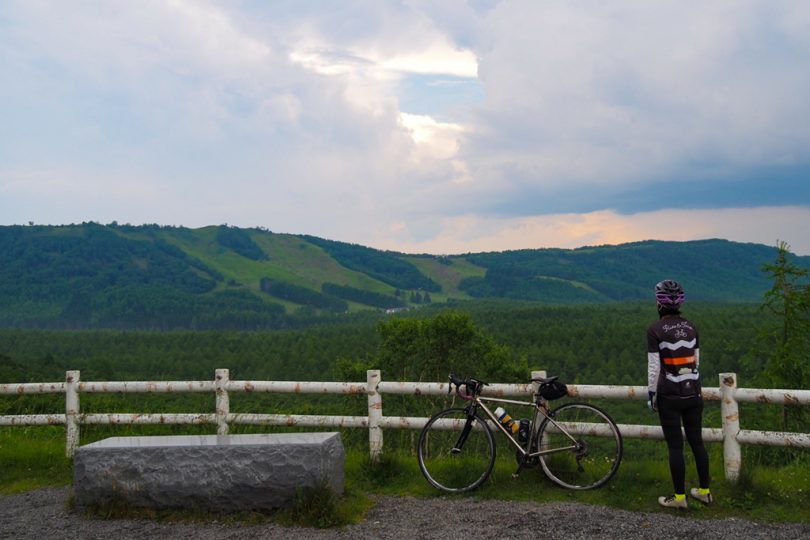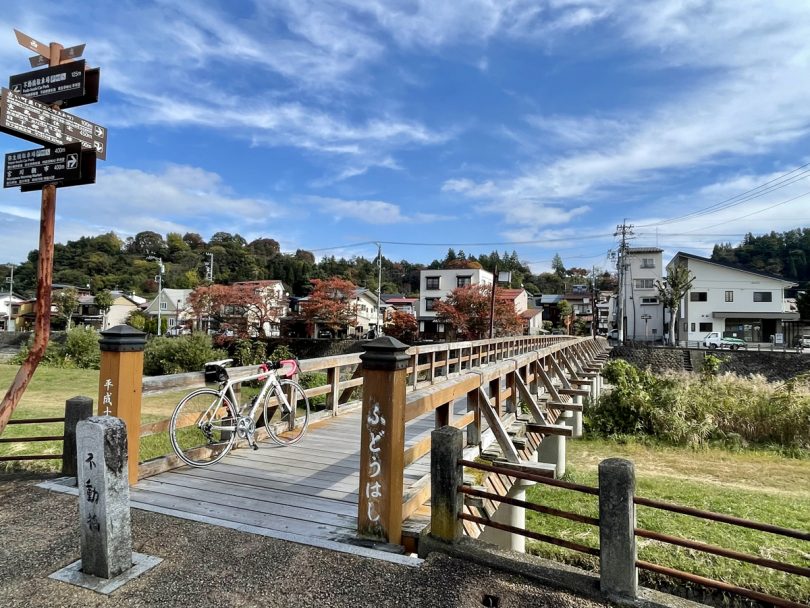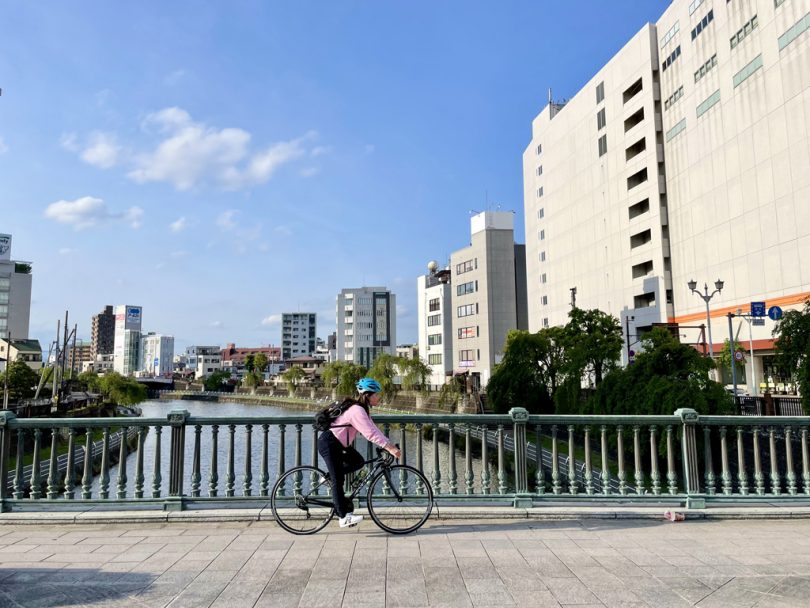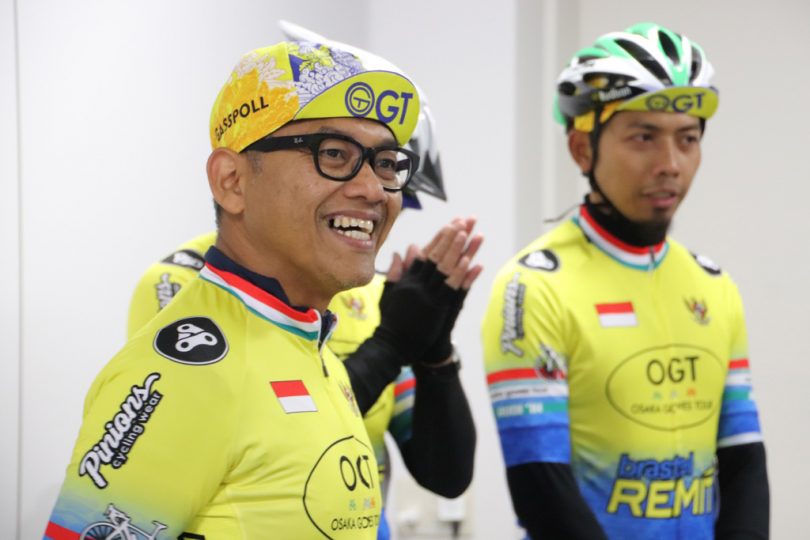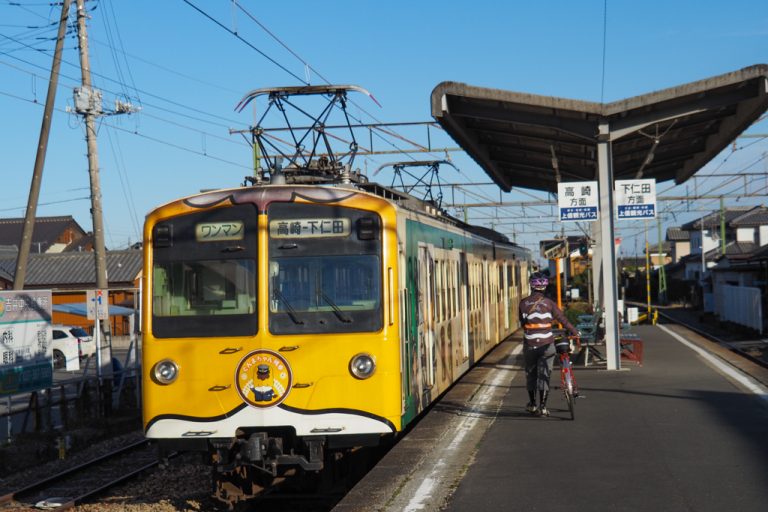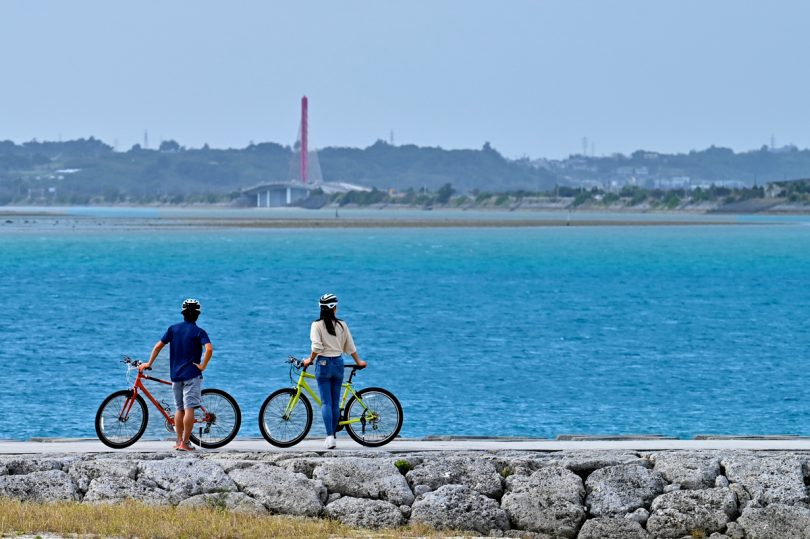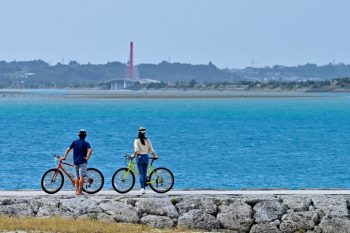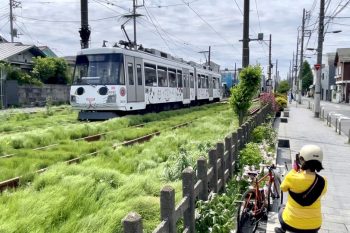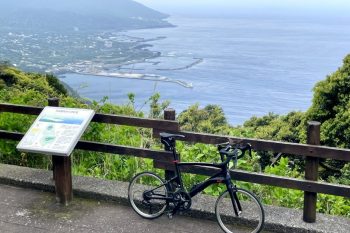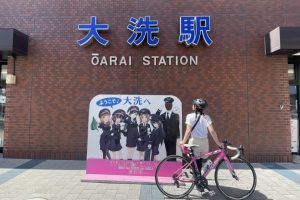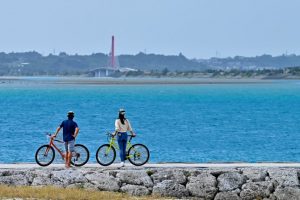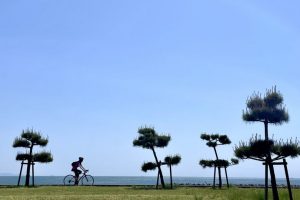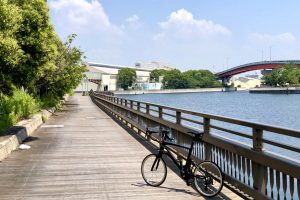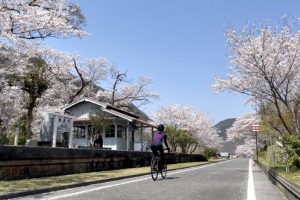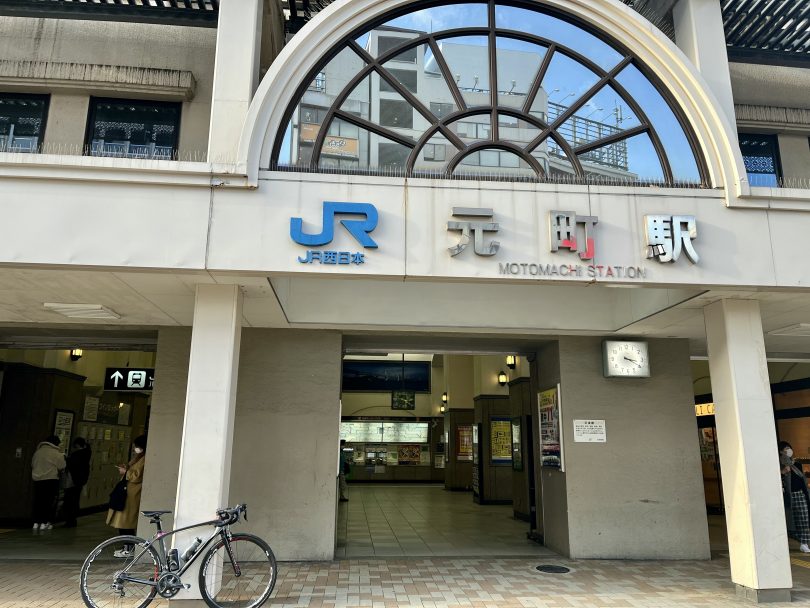 Even though the cold winter weather continues every day, we still want to ride outside on our days off when the weather is nice.
Even though the cold winter weather continues every day, we still want to ride outside on our days off when the weather is nice.
In such a case, I recommend a “scattered ride” like strolling in the port area.
The surface of the sea, glittering in the cold sunlight, has a different flavor from that of summer.
Here is a 30km round trip ride from Kobe to Rokko area where you can enjoy the winter seascape and visit public art at the same time.
Contents
- Start from JR Kobe Station – Harborland, feeling like Sydney Harbor Town
- Encounter Mural Arts in Meriken Park, the Heart of the Waterfront
- Enjoy Searching for Art in HAT Kobe Nagisa Park – Hyogo Prefectural Museum of Art
- Cross Rokko Bridge, a Spectacular Lunch on Rokko Island
- More Mural Arts in the City of Kobe
- Enjoy Chinese Desserts in Nankinmachi
- Course Introduction
- Summary
Start from JR Kobe Station – Harborland, feeling like Sydney Harbor Town
I started my tour from JR Kobe Station, which is very easy to get to from JR Osaka Station by taking Kobe Line New Rapid train bound for Himeji (4 stops, 25 minutes).
My first destination is Harborland, about 550m from Kobe Station to the seaside.

Harborland, along with the adjacent Meriken Park, is one of the Kobe’s landmark spots.
It is dotted with old and new buildings, such as Mosaic Ferris wheel, which offers a panoramic view of the port of Kobe, the old Kobe Port Signal Station, and Kobe Brick Warehouse.
It is a fun spot for architecture lovers, with a retractable bridge called “Hanekko.” If you time it right, you can even see the submarines of Kawasaki Dockyard across from the signal station.
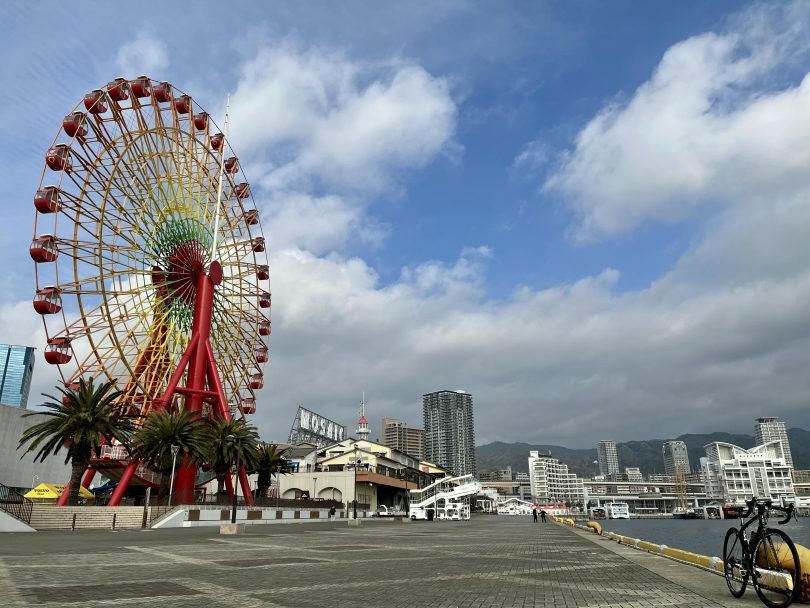
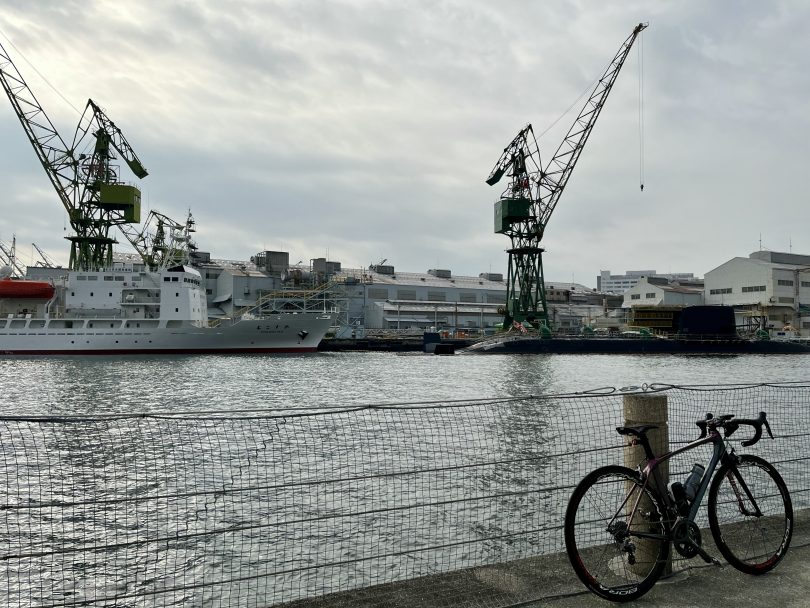
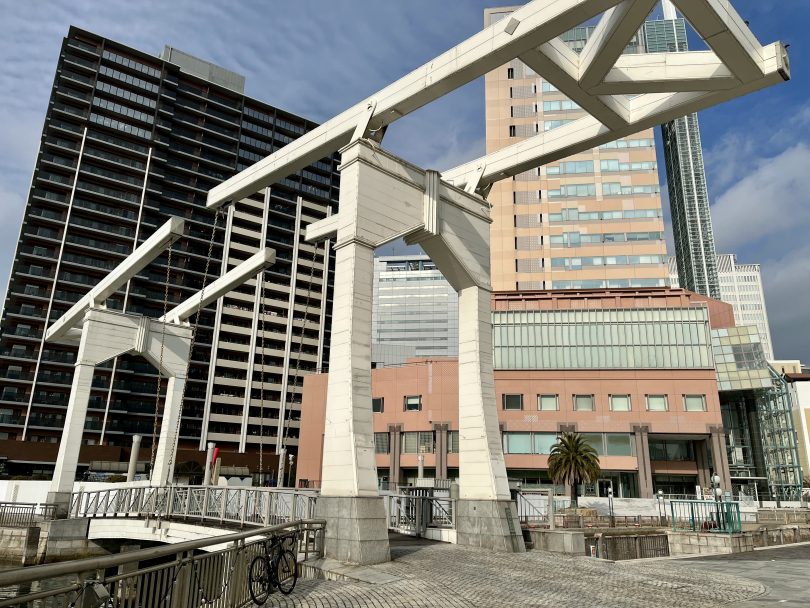
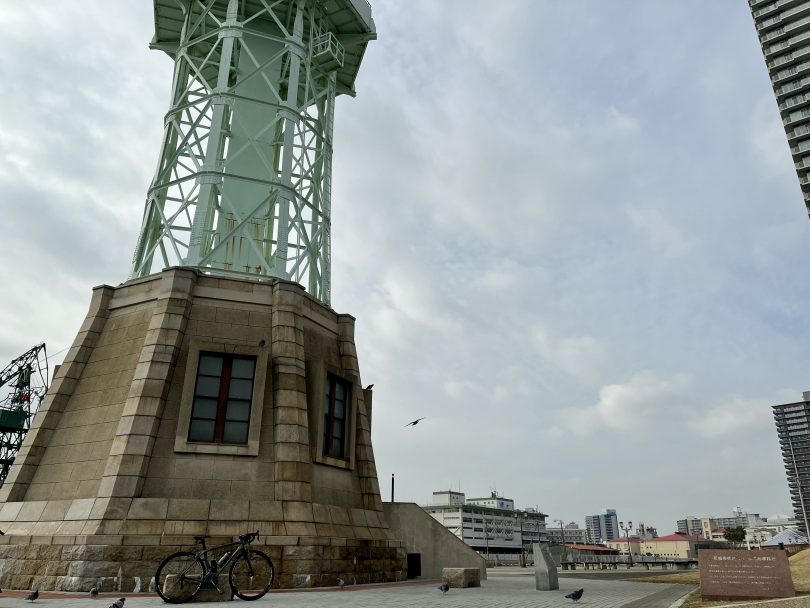
The view of Oriental Hotel on the middle jetty of Meriken Park and the large passenger ships in port makes you feel as if you are in Circular Quay, the harbor area of Sydney where Opera House is located.
The rumbling sound from the saddle as you ride slowly along the wooden deck is a different kind of fun than riding on a normal road surface.
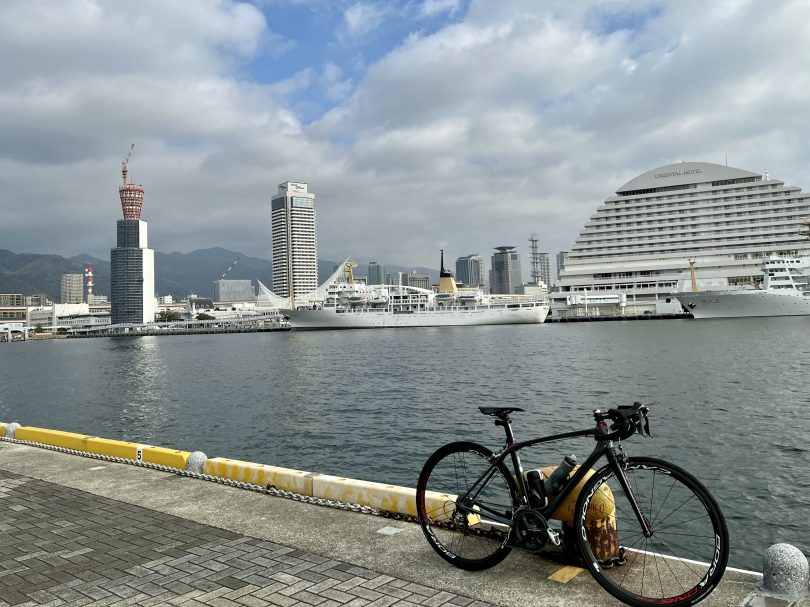
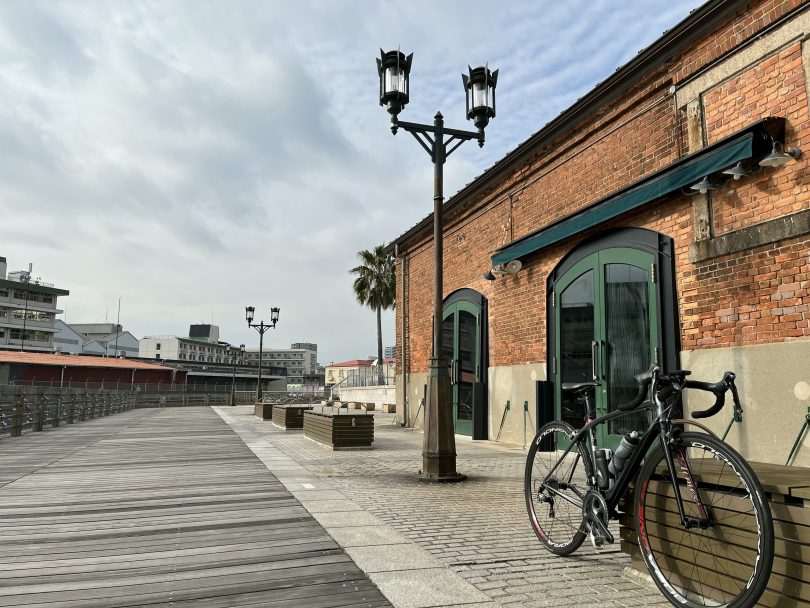
Encounter Mural Arts in Meriken Park, the Heart of the Waterfront
A 1.4km ride along the harbor from Harborland will take you to Meriken Park, the center of Kobe’s waterfront.
There is a cruise ship terminal that circles Kobe Port and Kobe Earthquake Memorial Park, which commemorates the Great Hanshin-Awaji Earthquake of 1995.
“BE KOBE” monument, which was created 20 years after the earthquake and contains the civic pride message that “the charm of Kobe is its people,” is one of the most popular photo spots in Meriken Park.


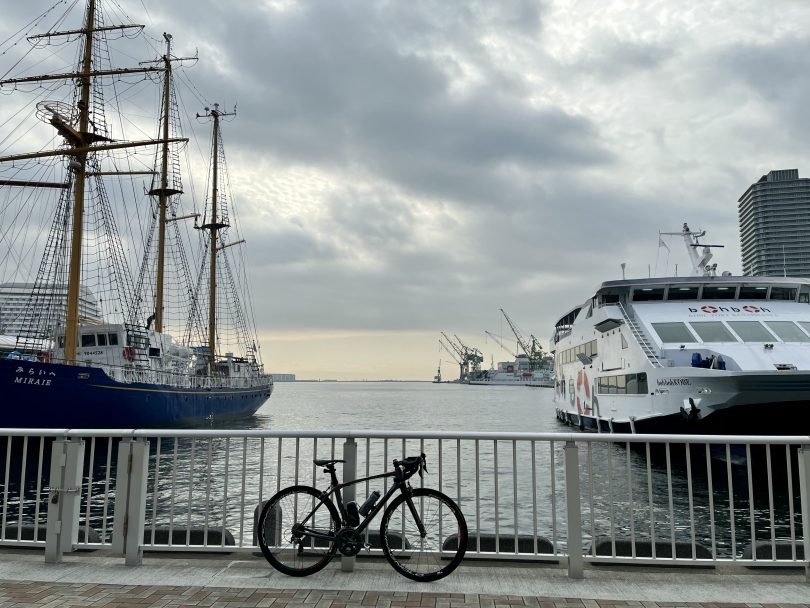
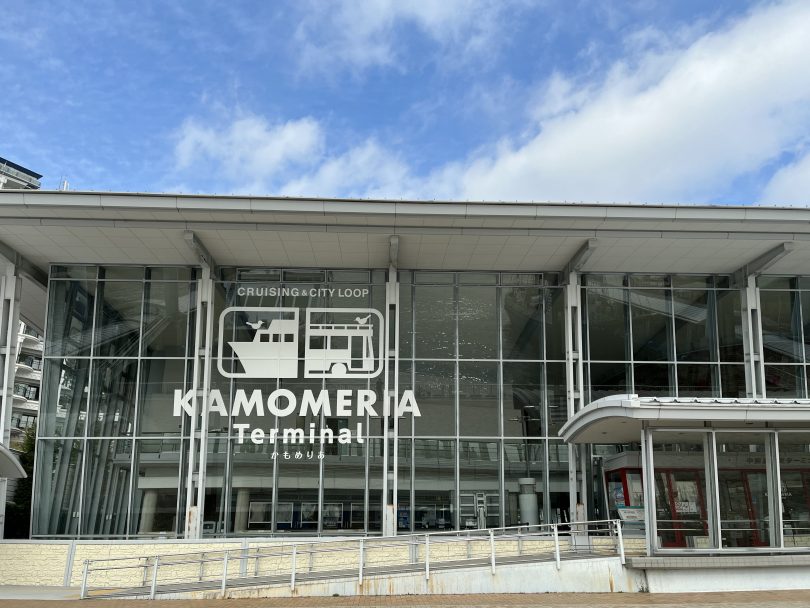
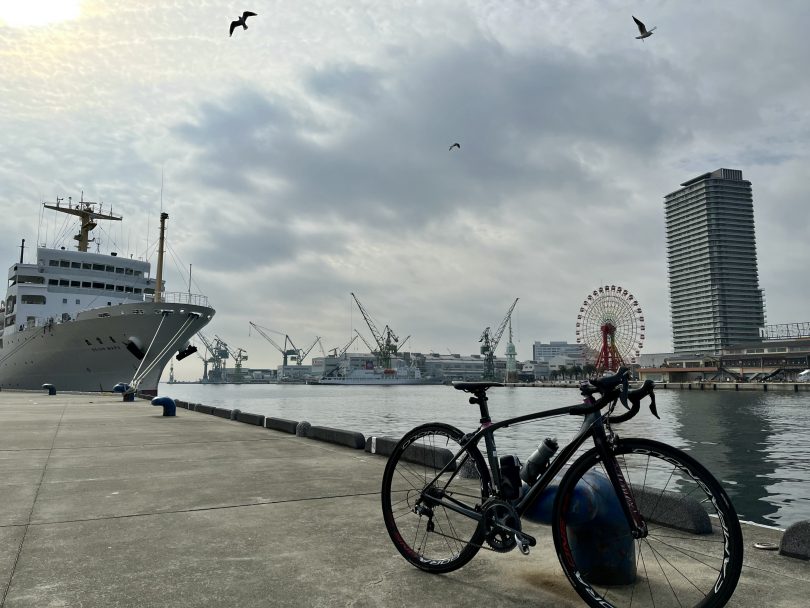
There were also people practicing BMX, and a skating rink set up to enjoy the sunny winter day off in their own way.
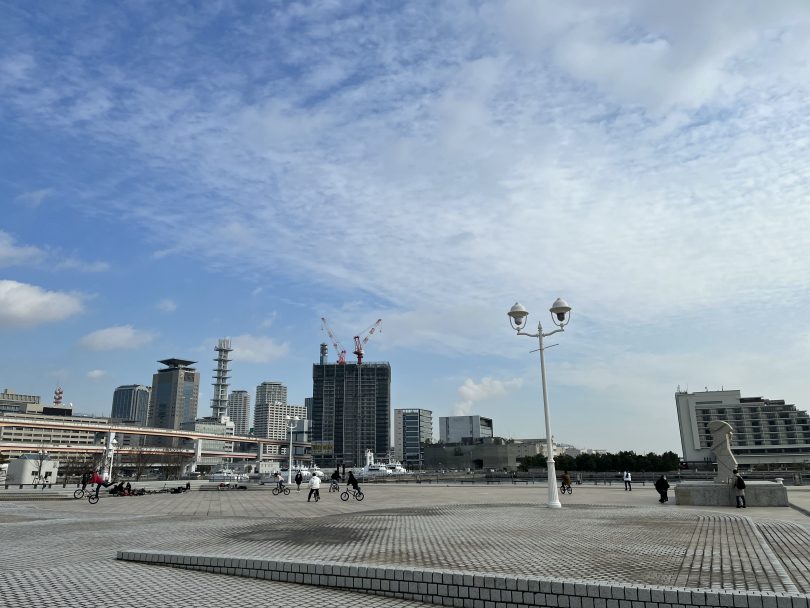
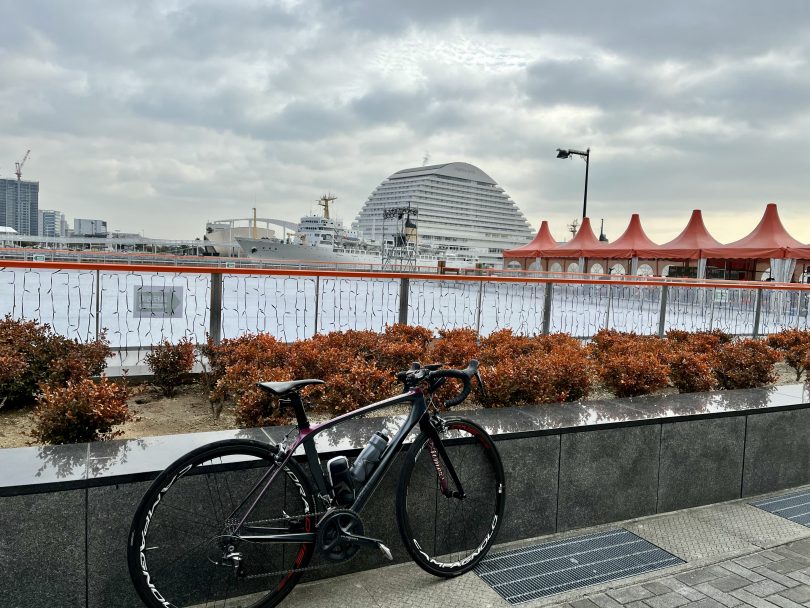
As for the theme of this ride, “Art cycling,” “Mural art” is a must-see in Meriken Park.
Mural art is a type of mural painting, and the “Kobe Mural Art Project” executive committee was launched at the end of 2019 with the hope of increasing the number of artworks in Kobe that can be enjoyed by both children and adults, and making Kobe a city where artists from around the world can gather and interact.
The project invites world-renowned artists and designers to create art in public facilities throughout the city, creating opportunities for citizens and tourists to experience art in a casual way.
On the wall of the music practice building near the entrance to Meriken Park, there is a giant girl painting by YOHEYY and a mural of pop characters by Kevin Lyons, both of which are great spots to take photos with your bike.
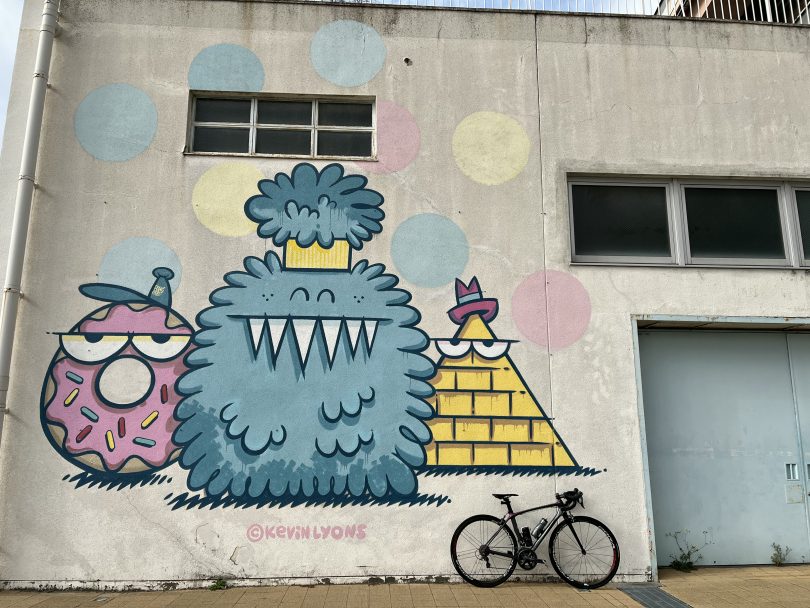
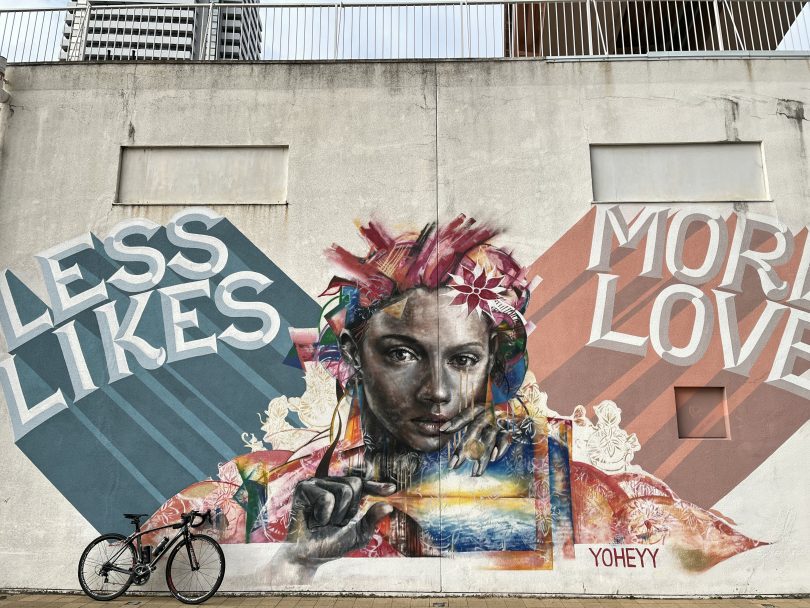
Enjoy Searching for Art in HAT Kobe Nagisa Park – Hyogo Prefectural Museum of Art
From Meriken Park, I headed for Rokko Island, about 11km to the east.
Of course, you can take National Route 3 inland, but since I’m going on an art cycling, let’s continue to ride along the coast and look for artworks.

There is a promenade in HAT Kobe Nagisa Park via Minato-no-mori Park along the coast, where many locals enjoy walking their dogs, running, and cycling.
As you walk through the park, a huge bear sculpture jumps out at you.
It is a bronze sculpture called “Animal 2021-01-B (KOBE Bear)” by Atsuhiko Misawa, and it is about 3.5m tall, so big that you can look up at it when you approach.
The gold-colored body is inspired by the sun and the light of the sea, the slope of the left hand side by the slope of Mt. Rokko, and the right hand side by the horizon of the sea.

At Hyogo Prefectural Museum of Art, which is located next to Nagisa Park, you can see a variety of public artworks outdoors in addition to the art exhibitions inside the museum.
The first thing that jumps out at you is a colorful three-dimensional work of a giant frog looking down at the ground from the roof of the museum.
It is a balloon art on a tent by Dutch artist, Florentijn Hofman.

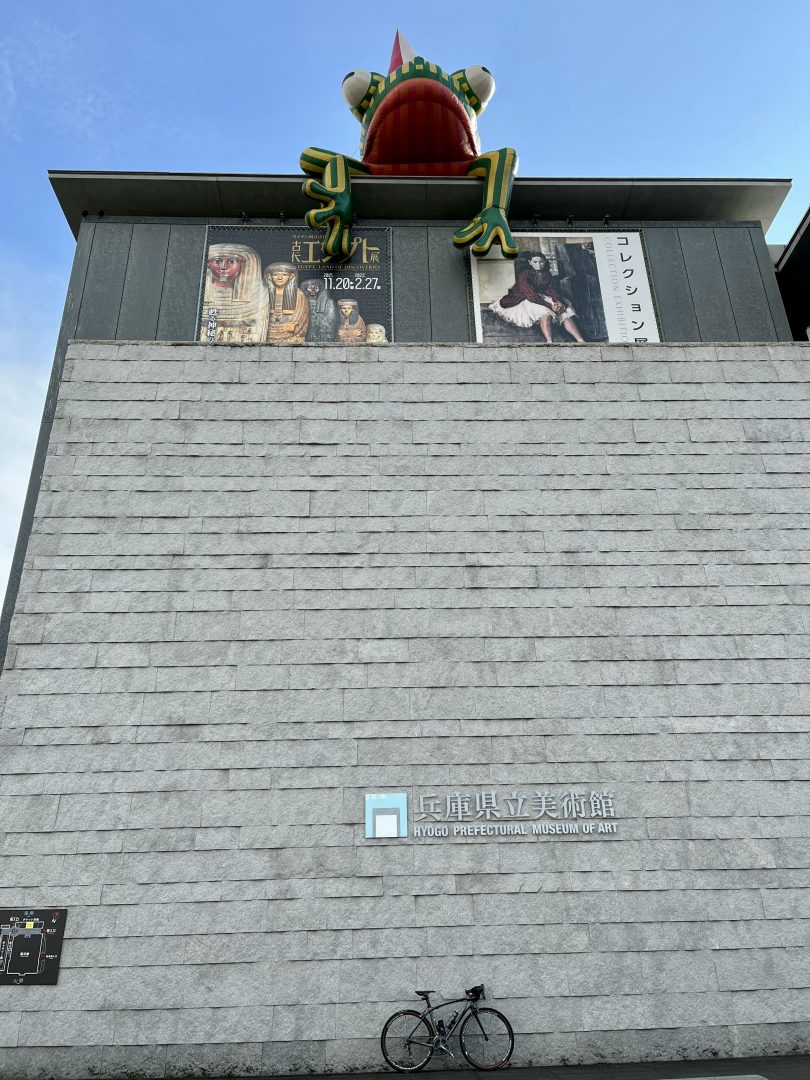
On the museum road on the north side of the museum (mountain side), you will find “PEASE CRACKER” by a local artist, Noboru Tsubaki, which has a strange shape somewhere between a living thing and a plant. On the grand staircase on the south side (ocean side), you will find “Sun Sister” (nicknamed “Nagisa-chan”) by Kenji Yanobe, which reminds us of space and the future. There are also other unique works.
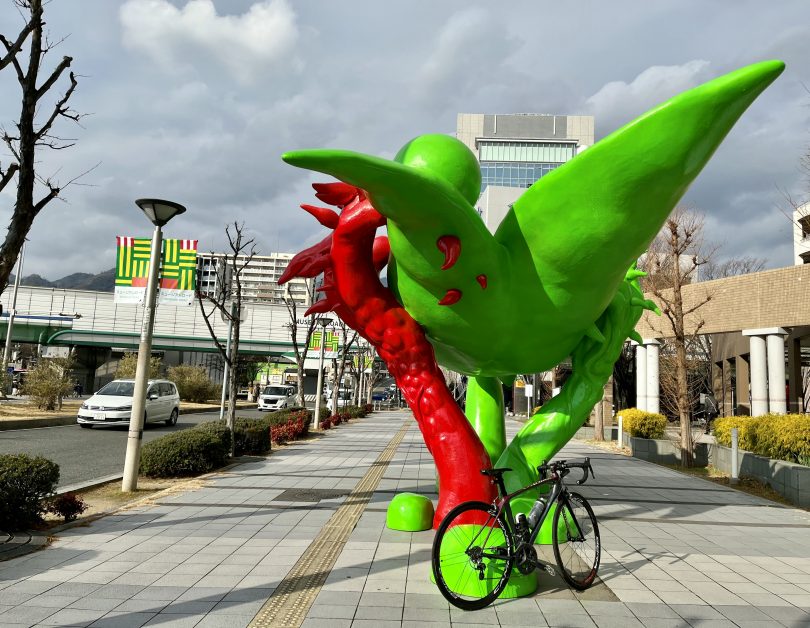
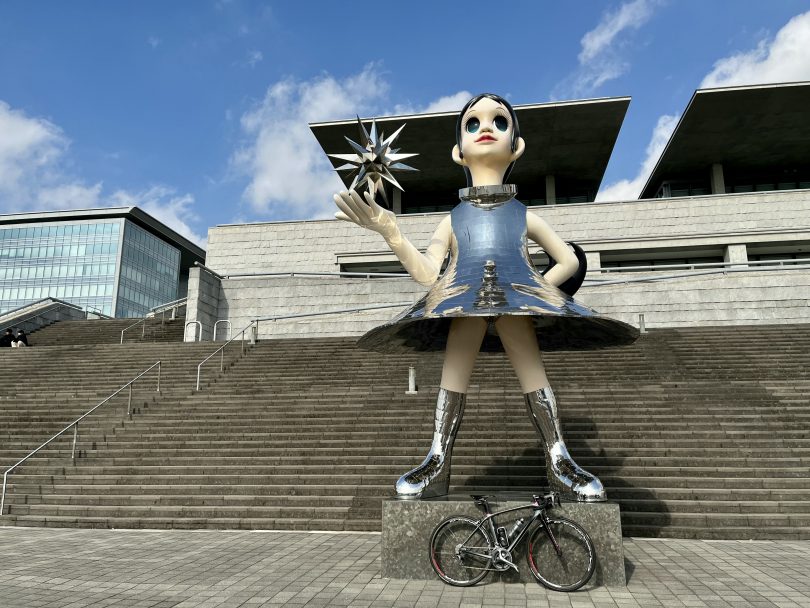
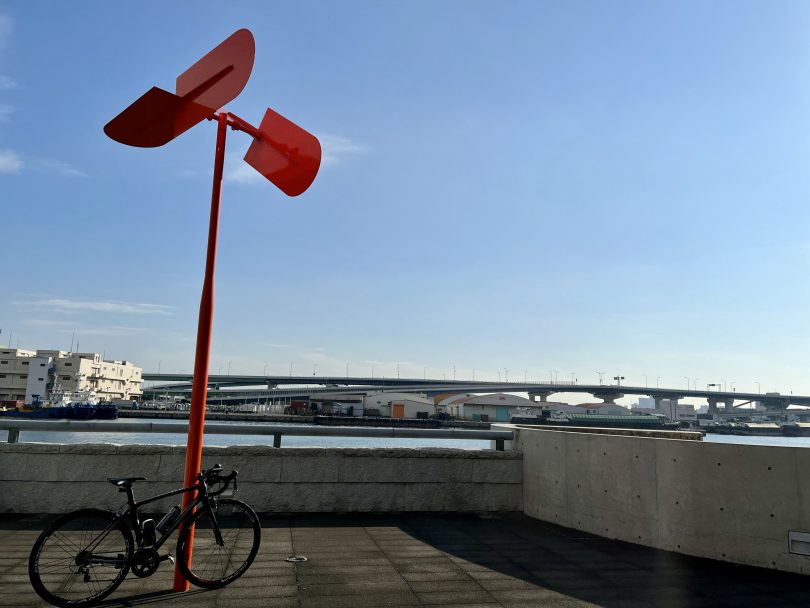
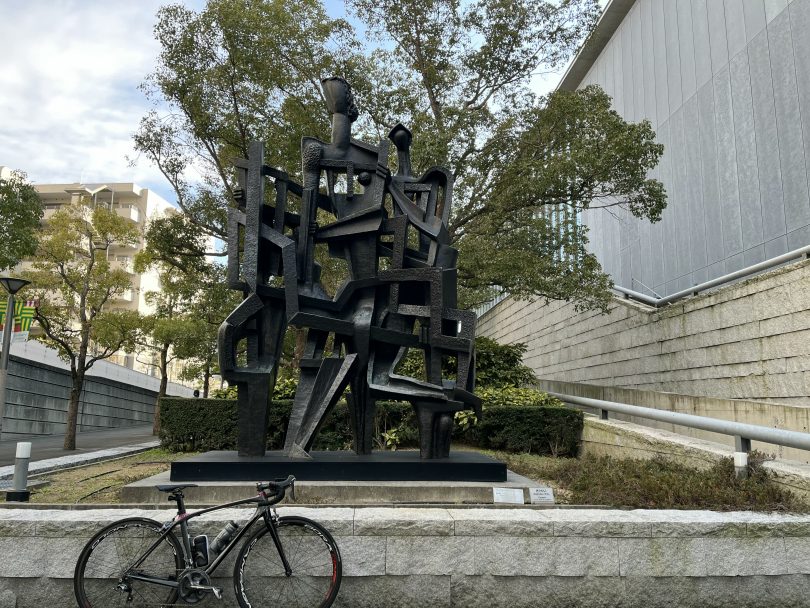
Cross Rokko Bridge, a Spectacular Lunch on Rokko Island
From Hyogo Prefectural Museum of Art, I’m going to pass through Nada-hama area, lined with factories and warehouses of the port, to reach Rokko Island.
Both the east and west sides of Rokko Bridge have promenades for pedestrians and bicycles, so you can cross without worrying about cars.
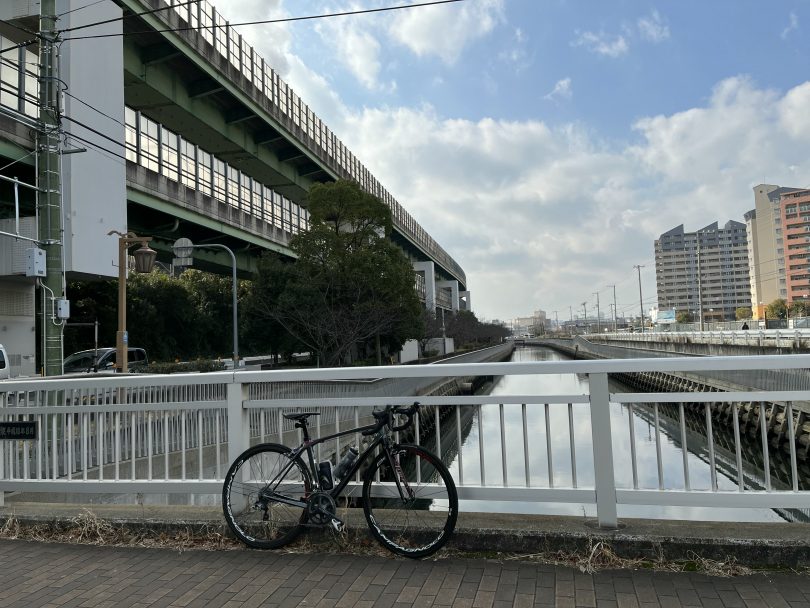



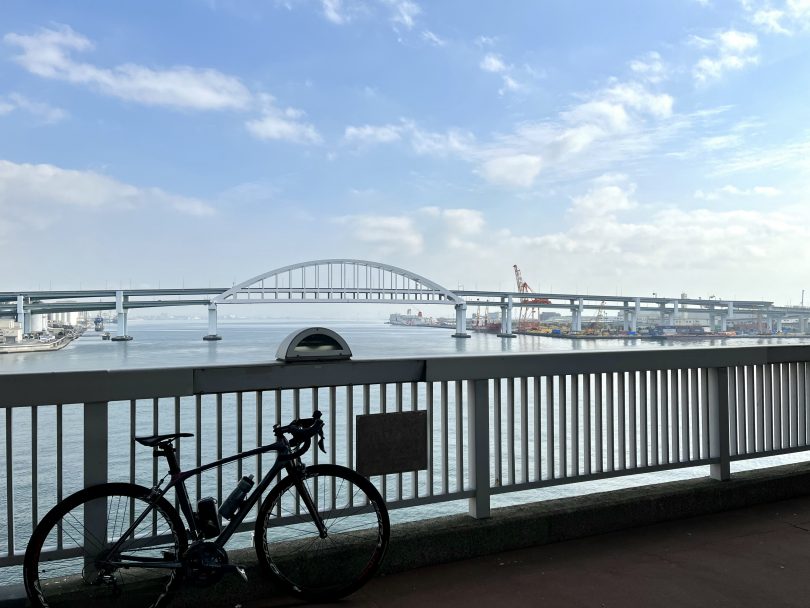
After crossing the bridge, you can continue to access the center of Rokko Island via the promenade.
The area under Kobe New Transit Rokko Island Line elevated railway tracks is a park, dotted with shopping malls and hotels.
If you have time, you may want to stop by Kobe Fashion Museum, which has exhibitions of European-style clothing from different periods and special exhibitions.

For lunch, I recommend “feel dining café&sea”, located in Marine Park at the tip of Rokko Island.
In the cold winter months, it’s great to enjoy the warmth of the inside, but it’s also blissful to sit on the terrace and enjoy a warm lunch plate of minestrone while looking out at the ocean with your bike.
It seems that many locals come here with their dogs on walks.



There are also mural arts in Rokko Island, so let’s look for them.
You can see it on the exterior walls of the outdoor swimming pool facility, “Decapatos”, the skateboarding practice area, and many other facilities.


More Mural Arts in the City of Kobe
After enjoying lunch and art on Rokko Island, I crossed the promenade of Rokko Bridge again and headed for Kobe city central. Even if you choose to ride along National Route 43 on the way back, you can head into the city with peace of mind as there are pedestrian and bicycle paths.
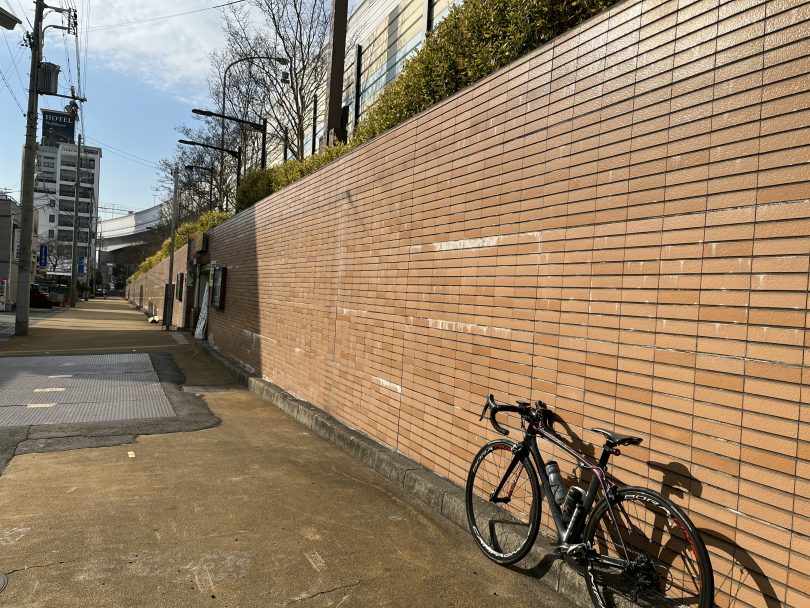
When you return to Kobe city central, please look for more mural arts in the city.
There are various artworks scattered around the south side of Kobe City Hall Cooling Tower and the downtown area near JR Sannomiya Station.
It’s fun to wander around to find what you want to see, or just enjoy a chance encounter.

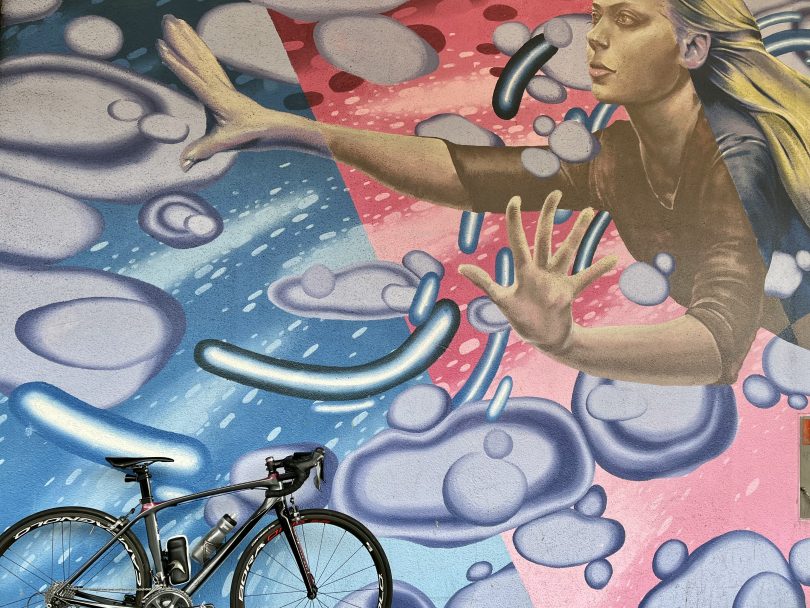
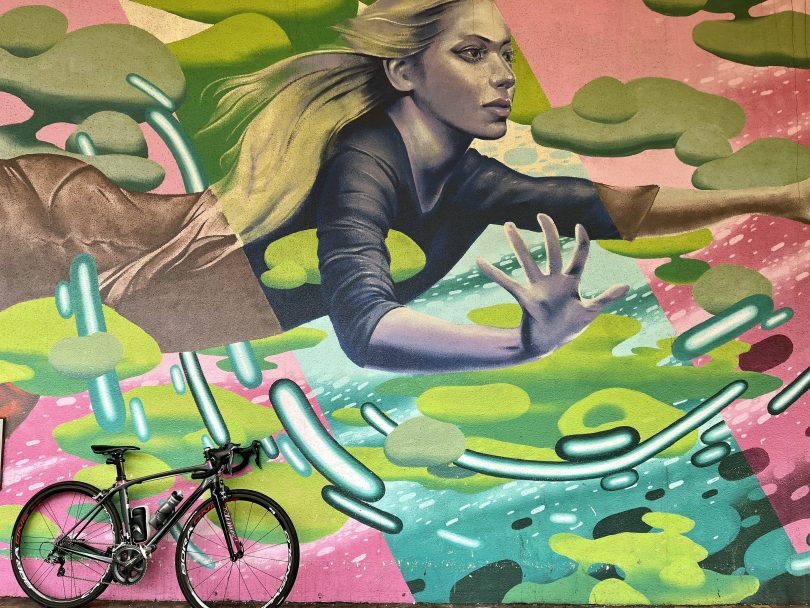
Enjoy Chinese Desserts in Nankinmachi
After enjoying the variety of works of art and sculptures, I headed to Chinatown in Nankinmachi, near JR Motomachi Station, in search of gourmet food.
Bicycles are not allowed in Chinatown, so I got off my bike and took a leisurely stroll while pushing it.

One of the fun things about Chinatown is that you don’t have to go into a restaurant to enjoy the many gourmet foods because they are sold at stalls in front of the stores.
Especially around Nankinmachi square, there are many stores selling a wide variety of food, such as chimaki, shumai (steamed meat dumpling), xiao-long bao, kakuni burger, sesame dumplings, etc. Everything you see looks so delicious that it’s hard to choose.
I bought a sesame dumpling for dessert, and some chimaki as a souvenir, and headed home from the nearest JR Motomachi Station bringing my bike.
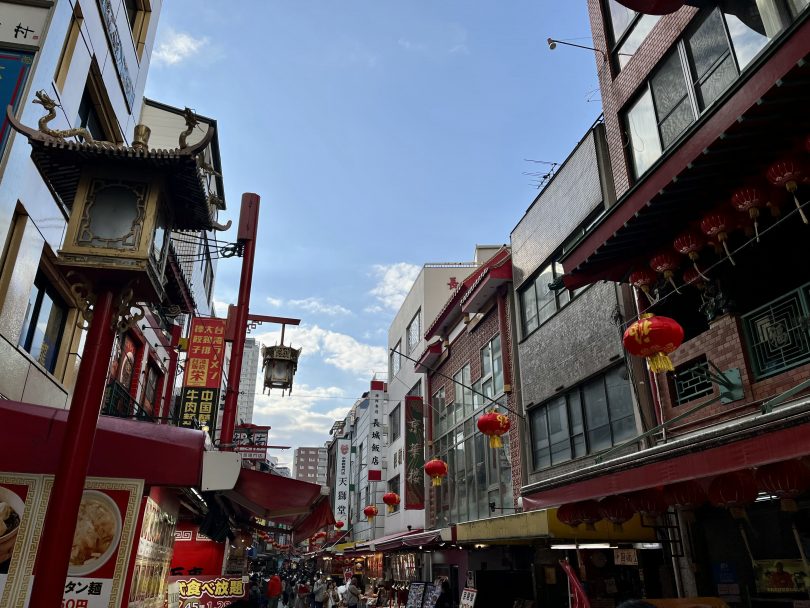
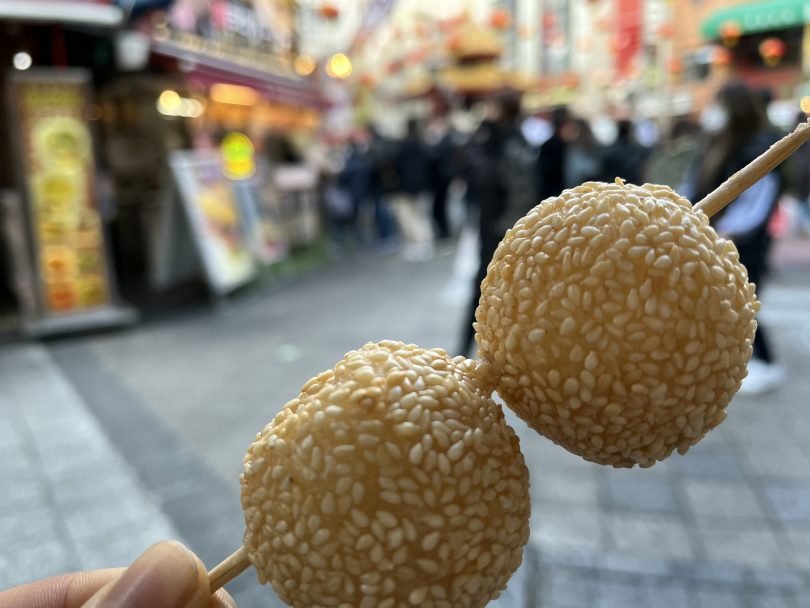
You can rent and return bicycles at several cycle ports in central Kobe using the “Kobe Linkle” (kobelin) community bicycle system.
Of the courses I introduced, Harborland and Hyogo Prefectural Museum of Art are within the range of cycle ports, so you can enjoy cycling for sightseeing in combination with shopping and visiting museums.

Course Introduction
▼Kobe Mural Art Project
https://kobe-mural.com/
▼Kobe Linkle kobelin
https://www.kobelin.jp
Summary
The course is about 30km from Kobe to Rokko Island and back, with an elevation gain of about 128m. The only slope that is a bit difficult is when you enter the promenade of Rokko Bridge, and most of the course is flat, so it is very easy to ride for beginners.
One of the charms of bikes is that you can enjoy the journey to your destination by cycling as an activity and as one of your purposes. On this course, you will be able to see many artworks along the way, which will surely stimulate your senses. Why don’t you go out on your bike and find your favorite artwork?


